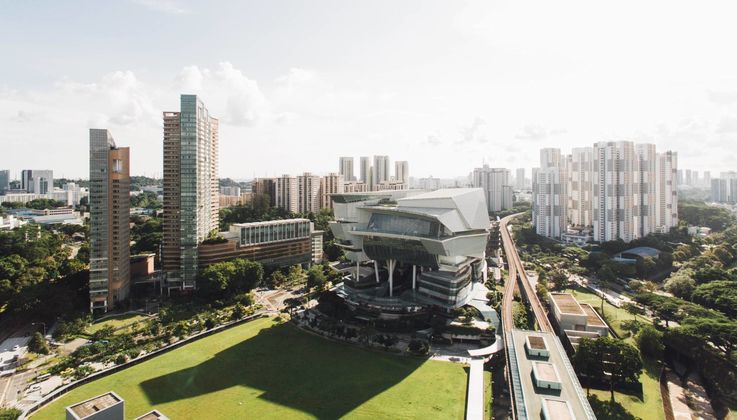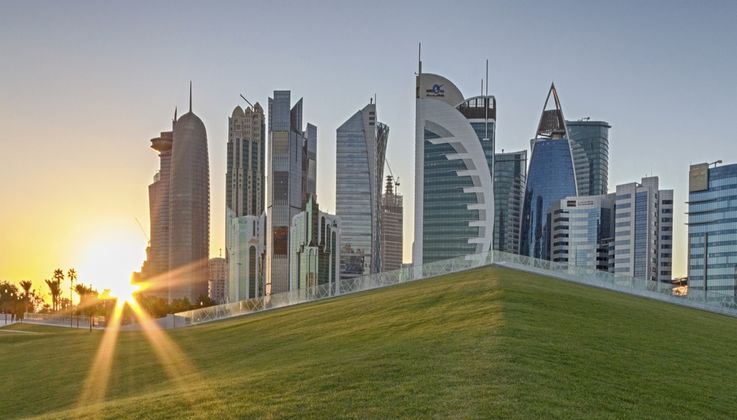
Earth Day – Take concrete action
Every year on April 22, Earth Day is celebrated in more than 175 countries across the globe. Its aim is to strengthen appreciation for the natural environment and encourage people to rethink their consumer behavior.
And indeed, change is required to reduce CO2 emissions. One path to reducing CO2 emissions is making better use of resources by extending the lifetime of products. Protectosil® is a product family from Evonik that protects construction materials in streets, buildings, and bridges. It includes graffiti protection, easy-to-clean and stone consolidation solutions, water repellents, and corrosion inhibitors.
The concrete and cement industry is one of the world’s largest CO2 emitters. It contributes more than 2.8 billion tons of CO2 each year, which accounts for 8% of all emissions. Sustainable infrastructure and urban development are required to reduce these emissions. Maintenance, repairs, and replacement of buildings, roads, and bridges can be reduced by extending their durability and longevity. The silane-based building protection solution Protectosil® does just that. The University of Leuven in Belgium monitored its impact on a quay wall of the container terminal in Zeebrugge, Belgium. They found that Protectosil® water repellents were still fully effective after 12 years. Normally, the first repair costs occur on insufficiently protected concrete after 10 years.
Earth Day gives everyone an opportunity to make the commitment to the planet visible and to show what can be achieved when individuals and businesses come together on a national and international level. The Paris Climate Agreement set ambitious but necessary targets to reduce greenhouse gas emissions and limit global warming by 2 °C. Earth Day marks the world’s commitment to tackling climate change. If repairs, maintenance, and replacement of infrastructure are reduced, CO2 emissions will be reduced. 77% of the causes of damage to reinforced concrete can be prevented, stopped, or mitigated by impregnation with silanes. Protectosil® extends the life of construction materials so the foundations we lay today set us on the road to reducing CO2 emissions in the coming decades.
The Protectosil® water repellents are penetrating deep into mineral-based materials such as concrete and cement. They protect from water and dissolved contaminants that can enter the interior of mineral-based materials through their porous structure. One treatment with silanes is enough to prevent the penetration of water and to reduce potential damage. The small molecular size of silanes enables them to penetrate deep into the building material. Here they bond permanently to the walls of the substrate pores, ensuring that neither UV radiation nor mechanical wear can negatively affect the protective properties of Protectosil®. This deep and durable protection is vital for structures such as bridges. De-icing salts, sunlight, and heavy traffic cause damage and contribute to the concrete consumption required for repairs and replacement. In Germany, there are currently around 5000 bridges near motorways that require repairs. Deterioration has resulted in the need for replacements which costs up to € 2500 per square meter. The Swiss Society for Corrosion Protection carried out corrosion tests on reinforcing steel embedded in concrete. The samples underwent repeated cycles of chloride-loading and drying to stimulate and speed-up real-life stresses on infrastructure. Chloride content and visual observations showed that the protection offered by Protectosil® extends the service life of reinforced concrete structures for decades.
"Environmental Teach-in" or "Earth Day" was established in 1970 by U.S. Senator from Wisconsin Gaylord Nelson to to bring awareness to humanity’s greatest existential threat and raise ambition across numerous environmental issues. Since then, it has developed to a day of action with truly global reach.
In Australia, Venture Café Sydney has teamed up with creatives from around the world to create the world's longest digital mural, spanning one full revolution of the earth. Their goal is to create climate and environmental awareness through art. As a purely digital work of art, this mural is applied to one of the few substrates that cannot be protected with Protectosil®.
But the café is located just a few kilometers from one of the city's landmarks: The iconic Sydney Opera House in Australia – which is just one of many projects from around the world, where Protectosil® was applied. The hydrophobic silane layer provides sustained protection. Regular maintenance and repairs, which increase concrete consumption and CO2 emissions, are simply no longer required.



